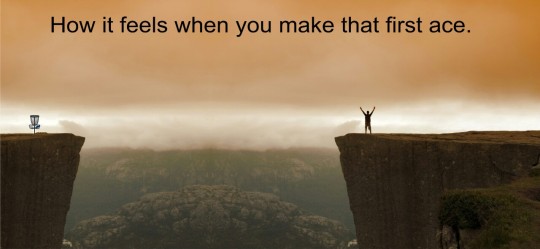Several years ago I was online looking for some information about the county I live in and stumbled upon an announcement of a disc golf tournament scheduled at a local course. At that point I learned two things: first, there was a disc golf course in my county. And second, disc golfers had tournaments! Until then I had only played disc golf a few times a year, and had no idea there were competitions. I ended up playing in that tournament, and met people that I’m still friends with today. When a local club was formed a bit later, I gladly joined.
Since then, I’ve become addicted to disc golf and a big part of the attraction is the tournaments. I love the atmosphere, the competition, the camaraderie, and often times the travel. Judging by the survey results for the Infinite Discs’ poll, there are a lot of other people that love tournaments, too. And some that never play tournaments. In this blog post we will look at the survey results surrounding tournaments and some of the reasons we do or do not play them.
To play, or not to play a sanctioned tournament
Let’s start by talking about sanctioned tournaments. A tournament sanctioned by the PDGA is different than other tournaments. The rules are stricter, participants are required to be PDGA members or buy a temporary membership, they are usually longer (more holes and/or held for more days), and typically cost a bit more. Many of us like the added rules, making the atmosphere at a sanctioned tournament a bit more serious. The payouts are also usually better than at non-sanctioned events. As PDGA members, we also get the benefit (or sometimes the detriment) of getting a rating from sanctioned tournaments so that we can compare our skill level to other disc golfers.
Over half of the survey respondents played at least one sanctioned tournament last year (53%). Of the 1,850 who played in at least one, the largest group, 472 people, only played in one sanctioned tournament. The next largest group (347) played between 6-10, and the third largest played two sanctioned tournaments. A significant number of us (110) played in 16 or more tournaments. It would be interesting to know who in the survey played in the most sanctioned tournaments, and how many!
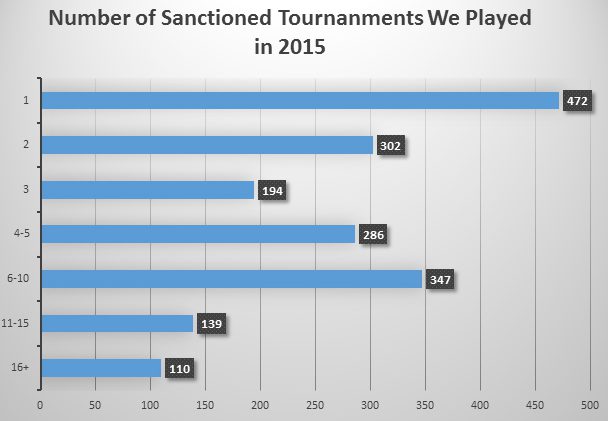
An unsanctioned tournament is more like a club tournament. Although most of the basic PDGA rules are followed, it is up to the tournament director (TD) to decide which rules will be enforced and which will be relaxed, such as marking a lie close to the basket. These tournaments usually have fewer rounds and are mostly single-day events. TD’s don’t have the same requirements as a sanctioned tournament, such as fees and added cash to the purse. Therefore, the unsanctioned tournaments usually don’t cost as much nor pay out as much.
Lower entry fees and no PDGA membership requirements may have contributed to a slightly higher number of people who played in unsanctioned vs. sanctioned tournaments. The survey results indicated that 2,083 people, or 60%, played in at least one unsanctioned tournament. Over half of that group played between 1-3 unsanctioned tournaments.
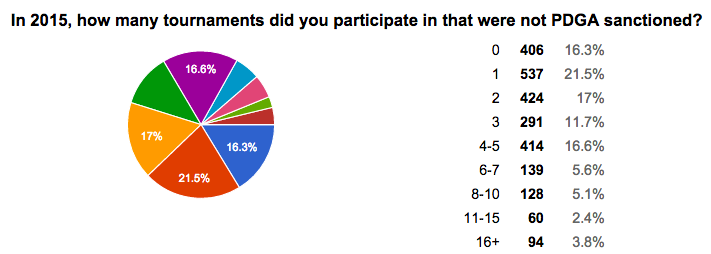
Get Some Sweet Swag
A fun and popular type of tournament is the specialty tournament, or sponsored tournament. I call them themed, because many of these tournaments have specific, unusual types of play. Disc golf manufacturers sponsor these tournaments and use them as a vehicle to let disc golfers try their product. Popular tournaments of this type include the Birdie Bash, Trilogy Challenge, and the Ace Race. Participants of sponsored tournaments get two or three new discs, plus a bunch of swag from the tournament sponsor, and only those discs may be used in the tournament. The format of the tournament varies, depending on the manufacturer. Some examples include:
–Ace Race, where the holes are typically shorter than usual, which is good because you only get one throw to make it in the basket! You get to record metal hits, which is when you hit the basket but it doesn’t go in, and aces. The person with the most aces wins, with metal hits used as a tie-breaker The Ace Race is sponsored by Discraft, and the disc mold is a new one that will be released later in the year.
–Vibram Birdie Bash, where a similar approach is found, but instead of one throw, you get two tries (on a par 3 hole) to make it in the basket. An ace (eagle) counts as five points, birdies counts as two, and a metal hit counts as one point. The person with the most points wins.
–Trilogy Challenge participants get a disc from all three Trilogy manufacturers, Westside, Dynamic Discs, and Latitude 64, and must only use those three discs. The discs consist of a driver, midrange, and putter. A regular tournament is held and the lowest score wins.
Sponsored tournaments are a great opportunity to try out new discs, get some swag, and play a tournament, all for about the cost of the discs. Winners get discs, bags, etc. Nearly two-thirds of survey respondents played in a sponsored tournament last year. The most popular was the Discraft Ace Race, followed by the Trilogy Challenge.
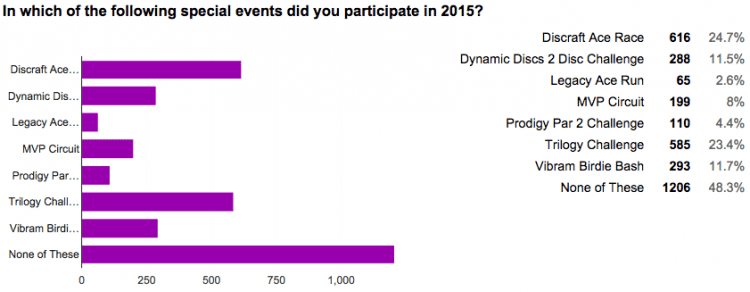
What’s Your Excuse?
When I looked at survey results of all of the tournaments mentioned above (sanctioned, unsanctioned, and sponsored) I found that 29% of respondents (1,006) didn’t attend any tournaments last year. In my experience, the reasons people have for not attending tournaments usually fall into two camps: tournaments cost too much, or they take up too much time. The survey asked those two questions, and asked about tournament preferences, to see if we could find out what might be standing between us and signing up for a tournament. Let’s start with the aspects of a tournament that might prevent us from signing up.
In the survey we asked everyone to rate their level of agreement to the statement that tournaments are too expensive. We can assume that if respondents remained neutral, they didn’t agree with the statement and don’t consider expense to be an issue. Therefore, let’s look at those who agree or strongly agree with the idea that tournaments are too expensive.
When asked to agree or disagree with the statement that tournaments are too expensive, about 86.2% of us either remained neutral or disagreed with the statement. That is an interesting statistic, since the cost to enter tournaments varies significantly. Locally, I’ve seen tournaments range from $5 (for club events) to well over $100 to enter. The more costly the tournament, the better the players pack for amateurs and the better the payout for pros. I’ll talk more about payouts and costs later. With over 86% of us satisfied with the price of tournaments, that only leaves about 13.8% of us who agree that tournaments are too expensive.

Since most tournaments consist of several rounds of disc golf, with some over several days, we wanted to find out how many of us agree with the statement that tournaments take up too much time. Again, counting those who remained neutral as not having a problem with the amount of time, the results were similar to the previous question. Only about 14% of us agree that tournaments take up too much of our weekend.

How Long Will It Go On
Since 29% of respondents didn’t attend any tournaments last year, I would expect the number of people who either find tournaments too expensive or feel they take up too much time, to be closer in number to 29%. And that it pretty much what happened. Only about 3.1% of us felt that tournament were both too expensive AND took too much time, which leaves about 24% of us who have one or the other issue with tournaments. Which accounts for most of the 29% of us who didn’t attend any tournaments. HOWEVER, that is only adding up the numbers without looking at the sources of the numbers. When I looked at how many people thought tournaments are too expensive or take too much time, but still attended at least one tournament, I found that 12.4% of us fall into that category. We could make a couple of conclusions from that data. Either those respondents don’t like the cost or time commitment, but played anyway. Or, they played in tournaments that didn’t have expensive fees or last as long as bigger ones.
The survey also asked if we prefer single- or multi-day tournaments. Again, counting those who either responded neutrally or didn’t answer the question as not having a problem with how many days a tournament takes, the results are as follows. There were 16.4% of us that didn’t like single-day tournaments, and 21.7% of us who didn’t like multi-day tournaments. The largest number of respondents were those who remained neutral or didn’t answer the question. However, 31% of us do prefer single-day tournaments and 16% of us favor multi-day tournaments.
 Out of all of the above survey results that surprised me the most was the one asking if tournaments are too expensive. I hear a lot of grumbling about the cost of playing in some tournaments, so I thought more people would agree with the statement. I would agree with the grumblers were it not for two important facts: I attend lots of tournaments, and so do many other people, because so many tournaments fill up year after year. Apparently, the market has spoken.
Out of all of the above survey results that surprised me the most was the one asking if tournaments are too expensive. I hear a lot of grumbling about the cost of playing in some tournaments, so I thought more people would agree with the statement. I would agree with the grumblers were it not for two important facts: I attend lots of tournaments, and so do many other people, because so many tournaments fill up year after year. Apparently, the market has spoken.
Taking Home Some Loot
Personally, it wouldn’t bother me if the amateur divisions (which is where I play) were a bit cheaper and didn’t have player’s packs. However, based on some of the survey results, I’m in the minority. Player’s packs typically consist of a tournament stamp disc, shirt, or other disc golf swag. Every amateur player gets a pack. And despite my feelings about them, player’s packs aren’t going away any time soon for a couple reasons. First, when tournament directors get disc manufacturers and other companies to sponsor a tournament, they can get products at a cheaper price. That allows TD’s to give out packs that are close to the dollar amount of the entry fee, while only spending a small amount of money on them. They can then take the difference in price and add it to the pro payouts. It’s a win-win because the amateurs get some swag, and the pros get a better payout.
The second reasons player’s packs are here to stay is because it’s fun to get one! Some tournaments are famous for their sweet player’s packs. There is something satisfying about taking home a bunch of stuff, regardless of how we performed. Did you win your division? Did you finish in the middle of the pack? Did you take last place? You get a player’s pack. Not only is there the psychological satisfaction of getting something for your money, there is the fun of throwing a tournament disc or wearing a tournament shirt for years to let people know that you were there. It’s also fun to see other people sporting swag from a tournament that you attended and bond with them.

Happiness Is…
One of the survey results I was most happy to see was how many people played in at least one tournament. As someone who enjoys getting together with folks who like disc golf as much as I do, it was nice to see that 71% of us played in at least one tournament. To me, that means most of us appreciate the sport enough to dedicate a little time and money for some competition. Often times we enter just to challenge ourselves. Hopefully we leave the event with a desire to continue to play and improve ourselves so the next time we compete, we see a little progress. And maybe pick up a win. Or at least have some fun and make good memories with our fellow disc golfers.

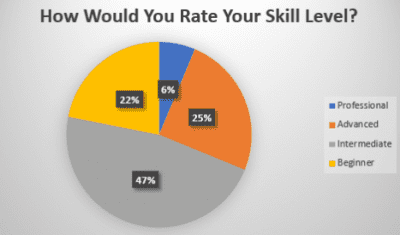
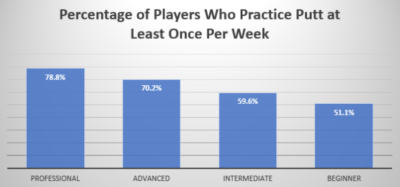


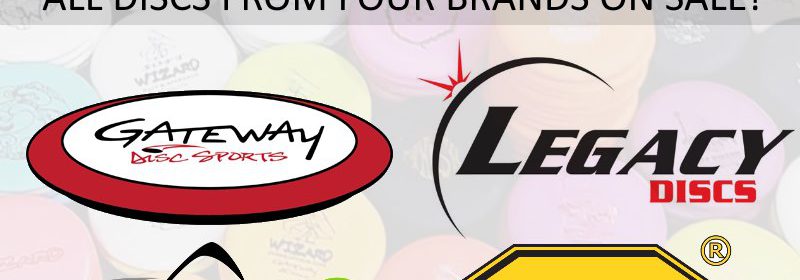
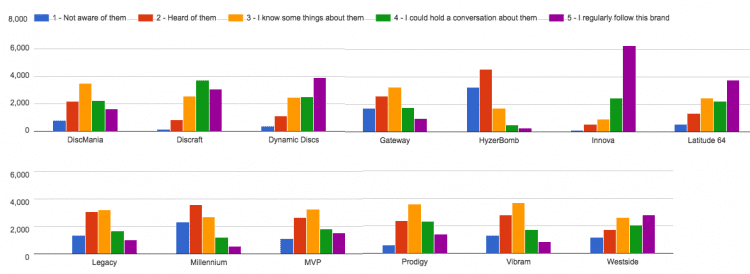
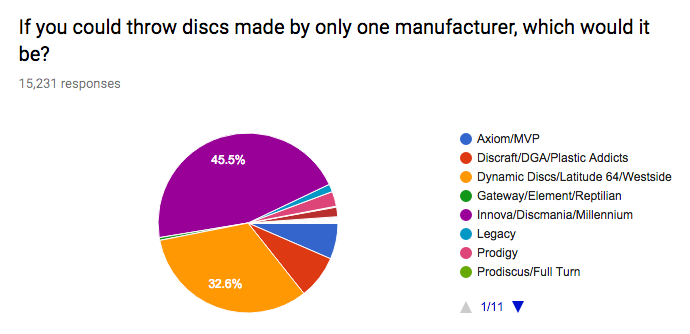
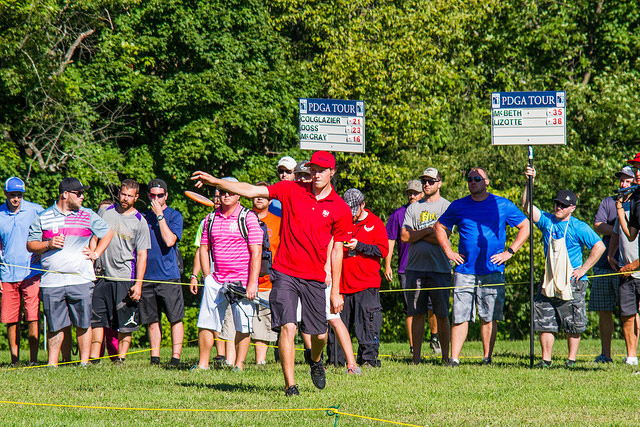
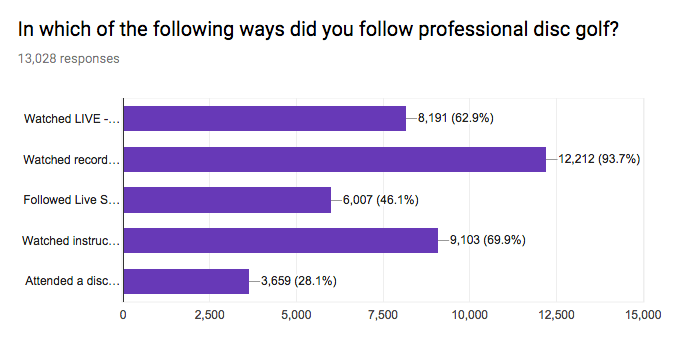
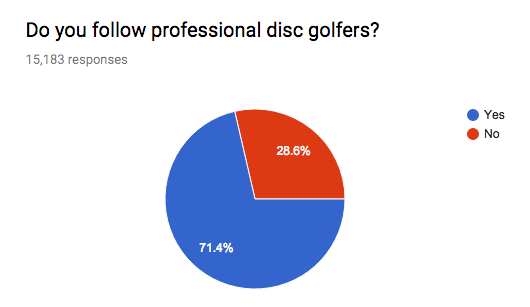
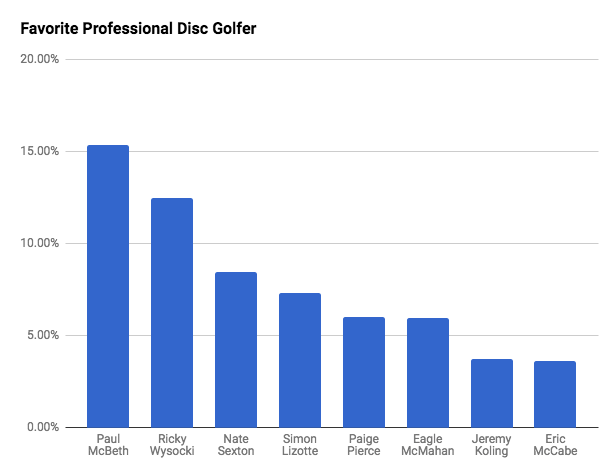
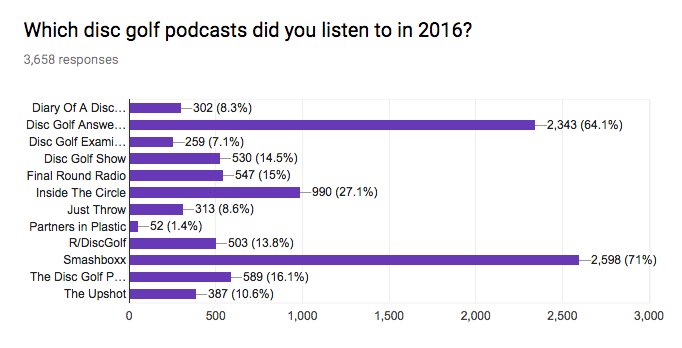


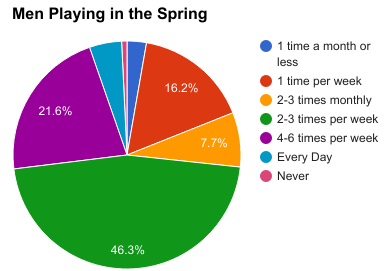



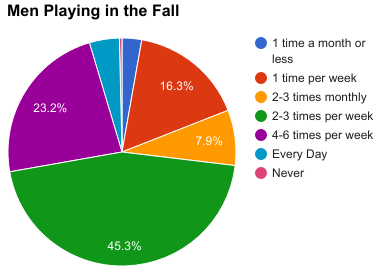
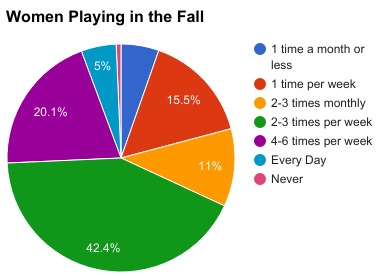
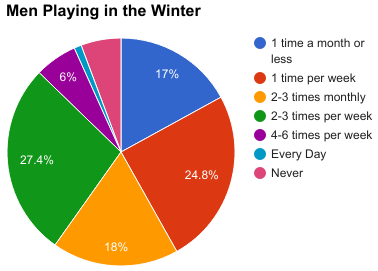
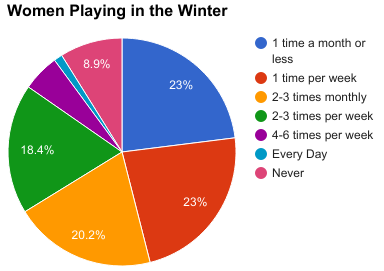
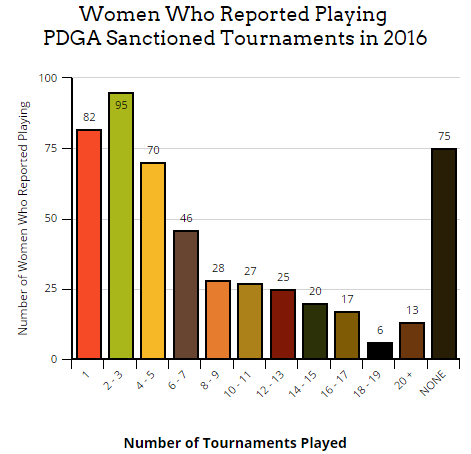
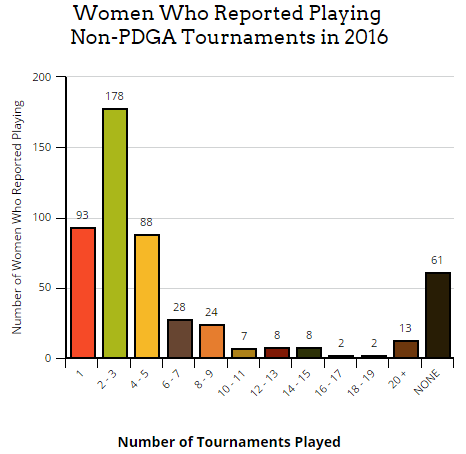
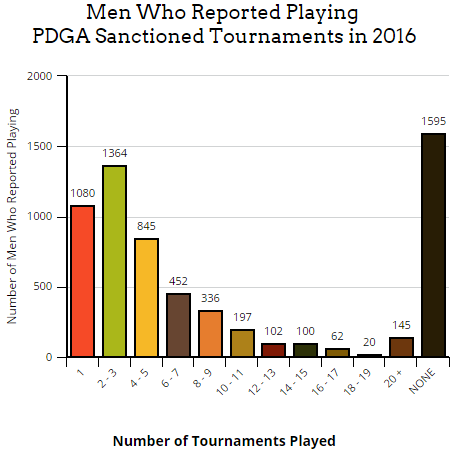


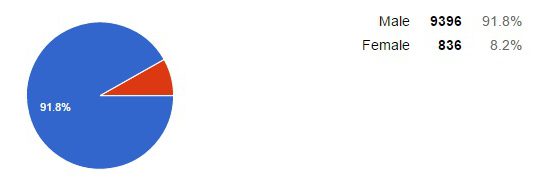 Of those surveyed, a whopping 91.8% were male, leaving only 8.2% as female. Does that truly reflect the balance of men vs. women in the game of disc golf? Though it might actually be a fairly accurate representation, we can surmise that simply less women are passionate enough about the game to take a survey (as mentioned above). But it would probably be an accurate statement to say that among passionate disc golfers, only 1 out of every 10 is a woman.
Of those surveyed, a whopping 91.8% were male, leaving only 8.2% as female. Does that truly reflect the balance of men vs. women in the game of disc golf? Though it might actually be a fairly accurate representation, we can surmise that simply less women are passionate enough about the game to take a survey (as mentioned above). But it would probably be an accurate statement to say that among passionate disc golfers, only 1 out of every 10 is a woman.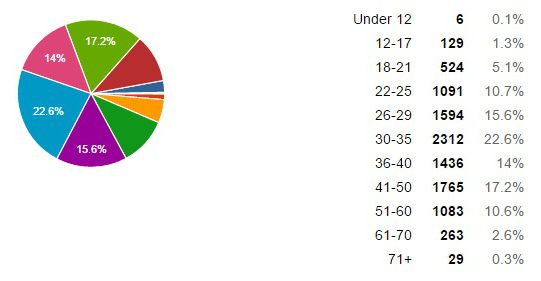 Looking at the age of those surveyed, we were happy to see a very wide spread. Though the age group that participated the most was the 30-35 demographic with 22.6%, other age groups ranging from 18 all the way through 60 were quite well represented. For those of us inside the disc golf industry, that is a very healthy statistic– to see that passionate players exist within all age groups. There is ground to be gained in the 17-and-lower age group, but that again could be an example of a group of people who are not interested in taking online surveys.
Looking at the age of those surveyed, we were happy to see a very wide spread. Though the age group that participated the most was the 30-35 demographic with 22.6%, other age groups ranging from 18 all the way through 60 were quite well represented. For those of us inside the disc golf industry, that is a very healthy statistic– to see that passionate players exist within all age groups. There is ground to be gained in the 17-and-lower age group, but that again could be an example of a group of people who are not interested in taking online surveys. The majority of those who took the survey are married, with just more than half, at 56.2%. Single came in at 37.2%, and the widowed / divorced / separated group came in at 6.6%. By the way, as of 2015, roughly 55% of all Americans over the age of 18 were married, so the players surveyed fall pretty much within the national average.
The majority of those who took the survey are married, with just more than half, at 56.2%. Single came in at 37.2%, and the widowed / divorced / separated group came in at 6.6%. By the way, as of 2015, roughly 55% of all Americans over the age of 18 were married, so the players surveyed fall pretty much within the national average. When looking at the employment status of those surveyed, the vast majority are employed for wages, with a few being self-employed. There is a sizable group of students that took the survey, but thankfully, not too many are unemployed or unable to work.
When looking at the employment status of those surveyed, the vast majority are employed for wages, with a few being self-employed. There is a sizable group of students that took the survey, but thankfully, not too many are unemployed or unable to work.








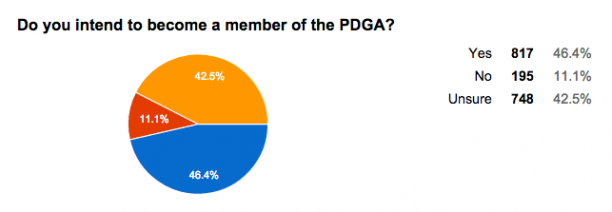
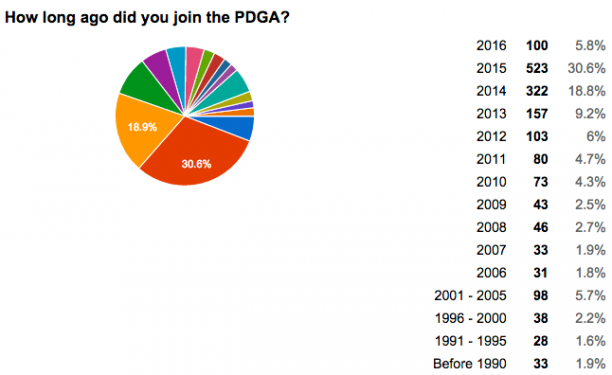
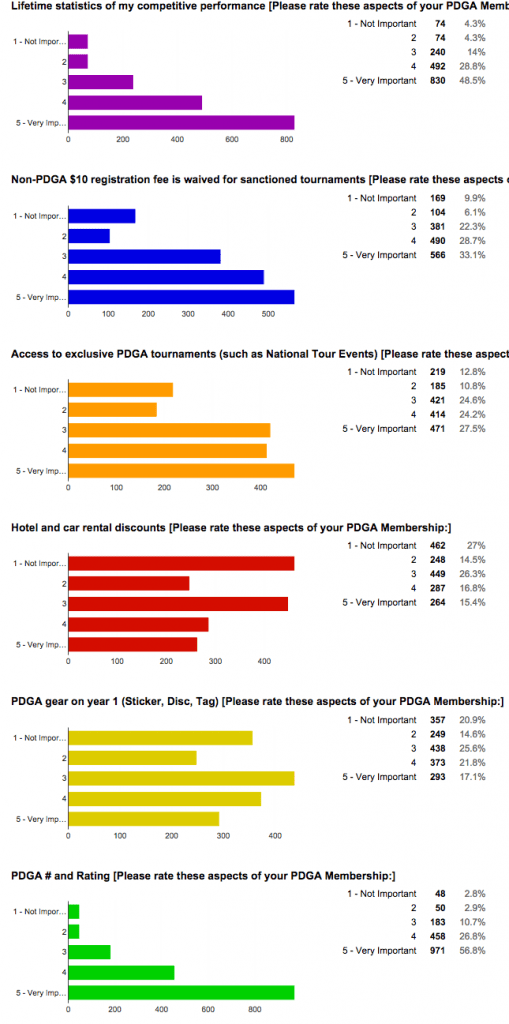


 Avery Jenkins is a professional player who has left much of the competitive play to become a sort of ambassador for disc golf. He travels the world to host workshops and participate in events that spotlight the sport. The impact that he has in his face-to-face encounters and his presence at events is huge, but the fuel he pours onto the fire through his
Avery Jenkins is a professional player who has left much of the competitive play to become a sort of ambassador for disc golf. He travels the world to host workshops and participate in events that spotlight the sport. The impact that he has in his face-to-face encounters and his presence at events is huge, but the fuel he pours onto the fire through his 
